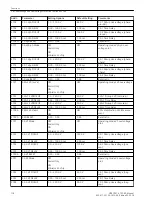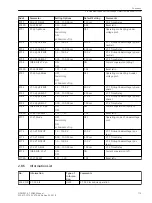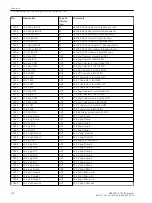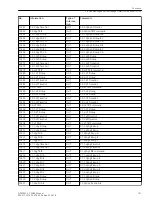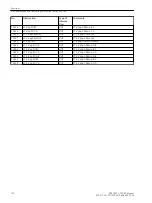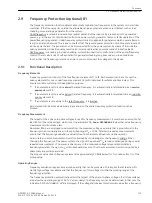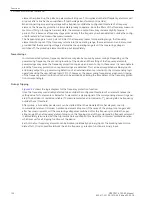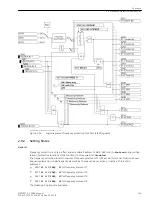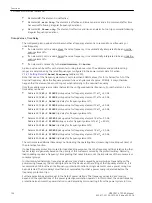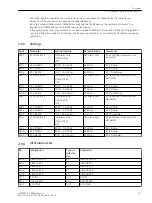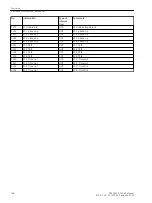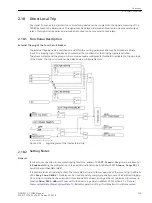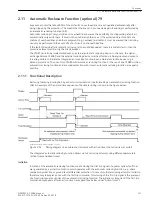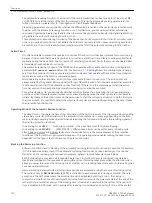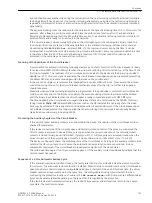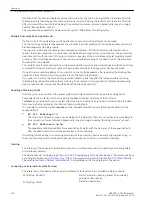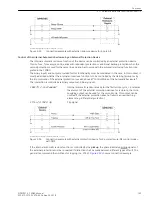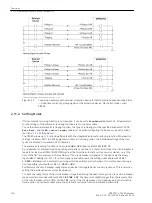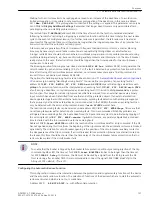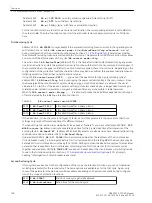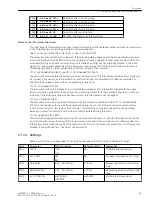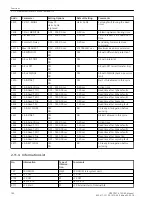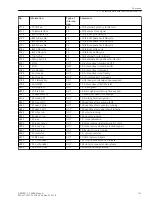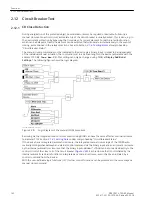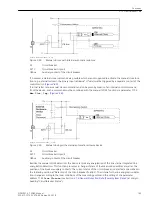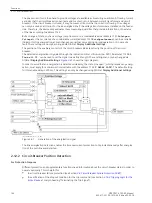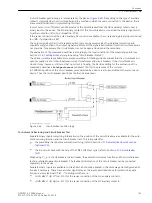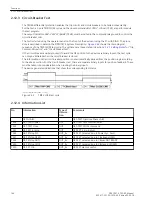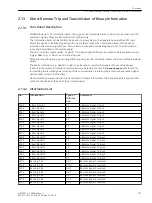
The automatic reclosing function is not started if the circuit breaker has not been ready for at least one TRIP-
CLOSE- TRIP cycle at the instant of the first trip command. This can be achieved by setting parameters. For
further information, please refer to “Interrogation of Circuit-Breaker Readiness”.
Via setting parameters you can specify whether the differential protection or the overcurrent protection work
together with the automatic reclosing function or not. Furthermore, you can select whether external trip
commands injected via binary inputs and/or the trip commands generated by transfer trip signals/remote trip-
ping initiate the automatic reclosing function or not.
Those protection and monitoring functions of the device that do not respond to short circuits or similar condi-
tions (e.g. overload protection) do not initiate the automatic reclosing function because reclosing would not
be useful here. The circuit-breaker failure protection must not start the automatic reclosing function either.
Action Times
It is often desirable to prevent the readiness to reclose if the short circuit has been present for some time, e.g.
because it is assumed that the arc has burned in to such an extent that it is not likely to extinguish itself auto-
matically during the dead time. Also for reasons of selectivity (see above), faults that are usually cleared after
a time delay should not lead to reclosing.
The automatic reclosing function of the 7SD80 can be operated with or without action times (configuration
parameter
AR control mode
). No starting signal is neces-
sary from the protection functions or external protection devices that operate without action time. Initiation
takes place as soon as the first trip command appears.
When operating with action time, an action time is available for each reclose cycle. The action times are
always started by the general starting signal (with logic OR combination of all internal and external protection
functions which can start the automatic reclose function). If there is no trip command yet when the action
time has expired, the corresponding automatic reclosing cycle cannot be executed.
For each reclosing cycle, you can specify whether or not it allows a start. Following the first general pickup,
only those action times are relevant whose cycles allow starting because the other cycles are not allowed to
initiate. By means of the action times and the permission to start the recloser (permission to be the first cycle
that is executed), it is possible to determine which reclose cycles are executed depending on the time it takes
the protection function to trip.
Operating Mode of the Automatic Reclose Function
The dead times — these are the times from elimination of the fault (drop out of the trip command or signaling
via auxiliary contacts) to the initiation of the automatic close command — may vary depending on the auto-
matic reclosing operating mode selected when determining the functional scope and the resulting signals of
the starting protection functions.
In operating mode
TRIP ...
(with trip command ...) the dead time is set for 3-phase tripping.
In operating mode
PICKUP ...
(With PICKUP...) different dead times can be set for every reclosing cycle
after 1-phase, 2-phase and 3-phase faults. Here the decisive factor is the pickup diagram of the protective
functions at the instant the trip command disappears. This operating mode enables making the dead times
dependent on the type of fault in the case of 3-pole reclose cycles.
Blocking the Reclosing Function
Different conditions lead to blocking of the automatic reclosing function. No reclosing is possible, for example,
if it is blocked via a binary input. If the automatic reclosing function has not been started yet, it cannot be
started at all. If a reclosing cycle is already in progress, dynamic lockout takes place (see below).
Each individual cycle may also be blocked via binary input. In this case the cycle concerned is declared as
invalid and is skipped in the sequence of permissible cycles. If blocking takes place while the affected cycle is
already running, this causes the reclosing to be canceled, i.e. no reclosing takes place even if other valid cycles
have been parameterized.
Internal blocking states restricted to certain time periods are processed during the course of reclosing cycles:
The restraint time
T-RECLAIM
(address 3403) is started with each automatic reclosing command. The only
exception is the ADT mode where the blocking time can be disabled by setting it to 0 s. If reclosing is
successful, all the functions of the automatic reclosing function return to the quiescent state at the end of the
restraint time; a fault after expiry of the blocking time is treated as a new fault in the system. If the restraint
time is disabled in ADT mode, each new trip after reclosing is considered as a new fault. If one of the protec-
Functions
2.11 Automatic Reclosure Function (optional) 79
132
SIPROTEC 4, 7SD80, Manual
E50417-G1100-C474-A2, Edition 02.2018
Summary of Contents for SIPROTEC 4 7SD80
Page 8: ...8 SIPROTEC 4 7SD80 Manual E50417 G1100 C474 A2 Edition 02 2018 ...
Page 10: ...10 SIPROTEC 4 7SD80 Manual E50417 G1100 C474 A2 Edition 02 2018 ...
Page 18: ...18 SIPROTEC 4 7SD80 Manual E50417 G1100 C474 A2 Edition 02 2018 ...
Page 248: ...248 SIPROTEC 4 7SD80 Manual E50417 G1100 C474 A2 Edition 02 2018 ...
Page 298: ...298 SIPROTEC 4 7SD80 Manual E50417 G1100 C474 A2 Edition 02 2018 ...
Page 312: ...312 SIPROTEC 4 7SD80 Manual E50417 G1100 C474 A2 Edition 02 2018 ...
Page 322: ...322 SIPROTEC 4 7SD80 Manual E50417 G1100 C474 A2 Edition 02 2018 ...
Page 400: ...400 SIPROTEC 4 7SD80 Manual E50417 G1100 C474 A2 Edition 02 2018 ...
Page 402: ...402 SIPROTEC 4 7SD80 Manual E50417 G1100 C474 A2 Edition 02 2018 ...

